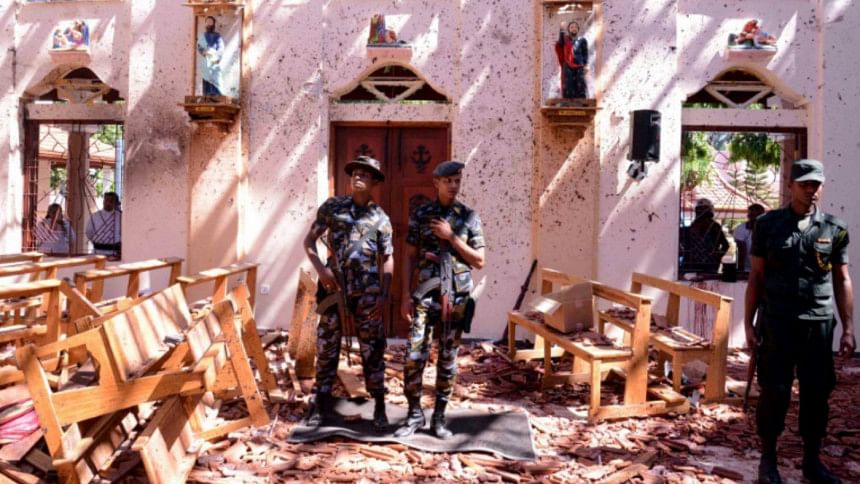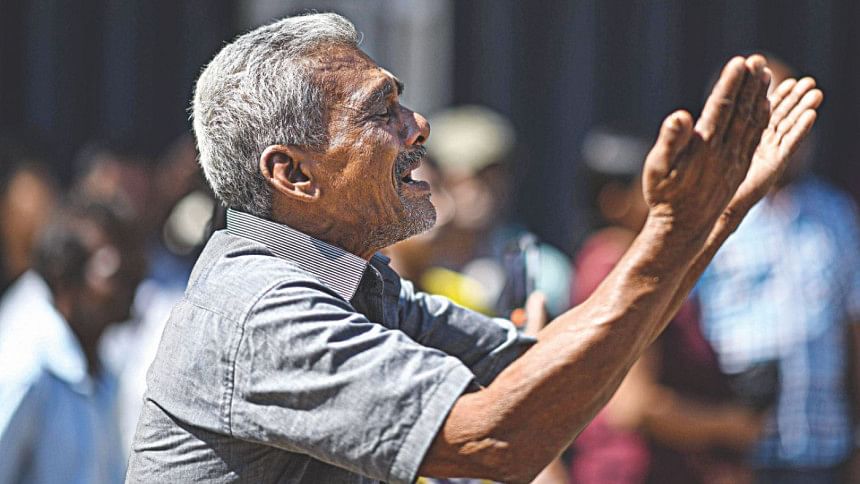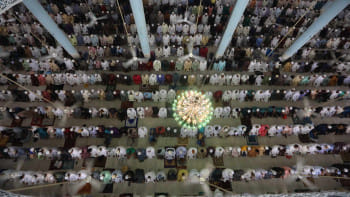DEATH TOLL 290 INJURED 500: Mystery shrouds source of attacks

It is one of the most lethal terrorist operations since September 11 -- with a death toll of at least 290 people. That number will almost certainly rise, given the hundreds that were also injured in the eight attacks at churches and hotels in Sri Lanka on Sunday.
What is puzzling about the attacks is that while Sri Lanka has seen plenty of terrorism in the past -- a result of the civil war between the separatist Tamil Tigers and the Sri Lankan government -- that war ended a decade ago. And the Tamil Tigers had notably focused their attacks on “transit hubs, Buddhist shrines, and office buildings ... and Sri Lankan officials,” rather than churches, according to a Council on Foreign Relations report.
Sri Lankan Defense Minister Ruwan Wijewardene told reporters the “terrorist incident” was carried out by those following “religious extremism.” While no group has claimed responsibility yet, the targets of the attacks -- churches packed with the faithful on Easter Sunday and three hotels catering to foreigners -- have also figured in previous attacks.
Meanwhile, quoting the Al-Arabiya TV channel, Russian news agency TASS reported that the Jamaat al-Tawhid al-Watania group has claimed responsibility for the terrorist attacks in Sri Lanka. The channel did not provide any details about the group, the report said.
In January of this year, IS claimed responsibility for an attack that killed at least 20 in a church in the Philippines. The attack also took place on a Sunday, when worshippers were gathered for mass. Then, last May, IS claimed responsibility for carrying out attacks at three churches in Indonesia, killing at least 12 people and injuring dozens more. And, in 2017, on Palm Sunday, IS killed at least 49 people gathered for Mass at two churches in Egypt.
But IS isn’t the only Islamist group to operate this way. An offshoot of al Qaeda in Iraq killed 58 people at a church on a Sunday in the Iraqi capital Baghdad in 2010. Four years earlier, al Qaeda in Iraq attacked the Grand Hyatt, the Radisson SAS and Days Inn hotels in Amman, Jordan, killing 57.
Then there’s Pakistan-based Lashkar-e-Tayyiba, which carried out attacks in 2008 on two luxury hotels in Mumbai -- the Taj and the Oberoi -- that were part of a larger operation in which a total of 164 people were killed.
And Indonesia-based Jemaah Islamiyah carried out multiple attacks on churches in 2000, killing 17. They also attacked the JW Marriott and the Ritz-Carlton hotels in the Indonesian capital, Jakarta, in 2009, killing nine.

None of these groups has had much of a presence in Sri Lanka, though IS did try to recruit from the South Asian country. And, in 2016, a Sri Lankan official said that 32 Sri Lankans had joined the group.
CNN obtained a memo circulated by Sri Lankan police that warned on April 11 of a “suicidal attack by the leader of National Thowheeth Jama’ath (NTJ)”.
Cabinet minister and government spokesman Rajitha Senaratne said yesterday authorities believed the NTJ was behind Sunday’s attacks on three churches and three luxury hotels in which 290 people died.
Authorities said 24 people have been arrested and that they were hunting for links between the group and foreign backers.
“We don’t see that only a small organisation in this country can do all that,” Senaratne said.
The Sri Lankan presidency said in a statement that “intelligence sections have reported that there are international terror groups which are behind local terrorists.”
Whoever staged Sunday’s attacks organised an extremely well-planned, coordinated assault.
The Soufan Center, a New York based group that monitors global security threats, said the Sri Lanka bombings bore all the “hallmarks” of “attacks by other Salafi-jihadist groups, particularly those where local groups receive foreign support.”
It highlighted the Christmas Eve bombings in Indonesia in 2000, where al-Qaeda worked with local group Jemmah Islamiyah, and the 2005 hotel bombings in Amman masterminded by an Al-Qaeda affiliate, reports AFP.
“These attacks are designed to increase sectarian tensions and destabilise the governments of the countries where they take place,” said a Soufan Center study.
A report released by the group in January said Al Qaeda and Islamic State wanted to recruit followers in South Asia and their propaganda “highlighted injustices against Muslims in Bangladesh, Myanmar, India, and Sri Lanka.”
Months after Buddhist riots against Muslim targets, the NTJ came to prominence in December when its followers were accused of attacking Buddhist statues in Kegalle district.
The act outraged the country’s majority Buddhist community.
NTJ secretary Abdul Razik has been arrested several times on charges of inciting religious unrest.
After one incident in 2016, Galagodaatte Gnanasara, head of a radical Buddhist group, the BSS, warned there would be “a blood bath” unless Razik was arrested. Gnanasara has himself since served a jail term for intimidating the wife of a missing journalist.
But signs of radicalisation have grown since the group allegedly took hammers to Buddhist statues.
In January, Sri Lankan security forces discovered 100 kilogrammes of high explosives and 100 detonators near a remote wildlife park.
While no group was accused, authorities said four Muslim radicals had been detained.
Major questions are now being asked over whether Sri Lankan police did enough to head off fears of suicide attacks on churches.
The government spokesman said however that police chief Pujuth Jayasundara should consider resigning following the attacks.

 For all latest news, follow The Daily Star's Google News channel.
For all latest news, follow The Daily Star's Google News channel. 



Comments